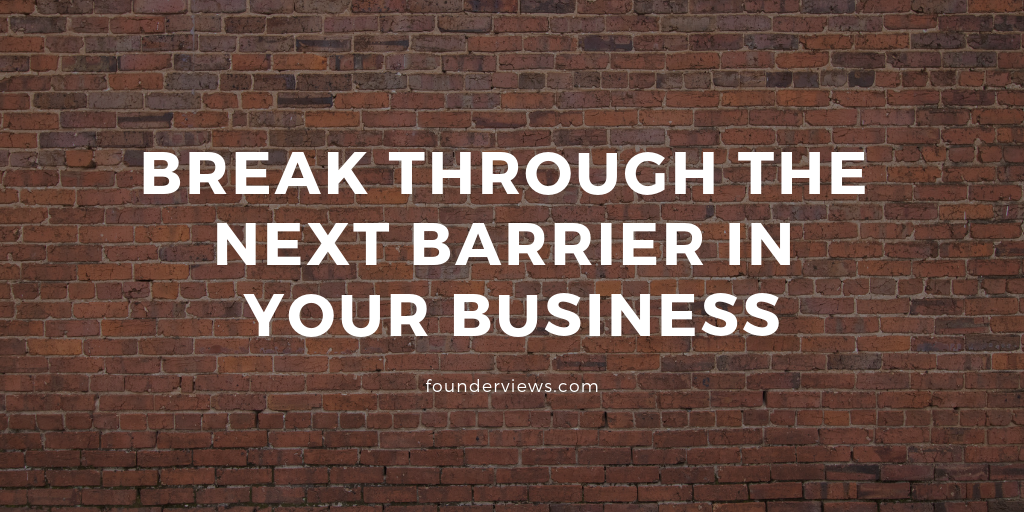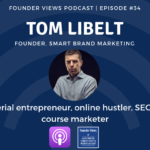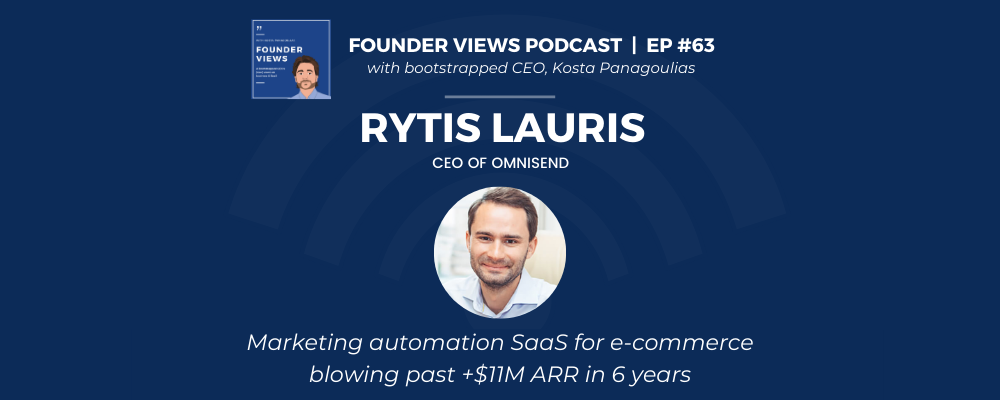It’s very common for companies to get comfortable and settle in a “coasting state”. A “coasting state” is when a company is making money, growing (albeit slowly), and trekking along steadily in their market. Not to say this is a bad thing (far from it, actually). After all, most companies will fail before they even get close to that “coasting state”. The fact is, most founders are satisfied coasting along comfortably, and collecting their stable pay check. This is also the reason why there are only few industry-leaders in a respective market.
For the big dreamers, and the founders who decide they want to abandon the “coasting state”, and instead elevate themselves as market leaders, they have to change their mindset and ideology when it comes to thinking about business. When confronted with a decision, you can’t think about today, you have to think about the future. Every decision has to be made with the thought of scale and long-term focus in mind. You can’t think about the effects that choice will have in a day, week, or month. You have to think of the impact that choice will have a year from now, and whether the choice will impact your long term vision.
Many times, these big decisions will make you very uncomfortable. Being uncomfortable is a good thing. Being uncomfortable means you’re growing, and stepping out of your comfort zone. If you keep doing the same thing over and over again, you likely won’t be advancing your business forward. That’s exactly how companies fall into the “coasting state”. The only way to truly grow and evolve your company is to embark down paths that you’ve never explored before. For example, if you usually hire one person at a time, try hiring four. If your team usually relies on you to come up with the answer, empower them to do it on their own.
Usually, companies will come to a crossroad- they will either choose to continue on the “coasting state” (which is what most do), or decide to break barriers and reach the next threshold as a company. I define company thresholds as companies doing the following revenues:
- Threshold 1: $1M to $2.5M
- Threshold 2: $2.5M to $5M
- Threshold 3: >$5M
Each threshold to the next might not seem like a big difference, but believe me, the differences are enormous. A lot has to change for a company to break into each new threshold, such as added resources, updated internal processes, more communication channels, and introducing multi-level management. It’s very easy to get swallowed up and overwhelmed as a founder, if you don’t cross each threshold carefully.
Here are the 3 steps you have to take to successfully break through the next threshold in your business:
1. Mindset
It all starts from the top. The leaders of the company have to first firmly believe in the vision themselves. The biggest challenge starts with mindset and belief. As cliche as it sounds, the biggest limitation stopping most founders from breaking into the next threshold is their own mind.
For the big dreamers, and the founders who decide they want to abandon the “coasting state”, and instead elevate themselves as market leaders, they have to change their mindset and ideology when it comes to thinking about business.
2. Instil the belief in those around you
Once you believe in the vision, you have to instil that belief into the rest of the team. Often times, that’s the hardest part. Generally, humans don’t like change. When your team is used to being on a particular path, and working in a particular way, asking them to change course, usually comes with some resistance and hesitation. It takes persistence and continued confidence from the company leaders to really pound the message in to the rest of the team. However, once that alignment happens, something amazing happens. The floodgates and horizons open up, and it will only be a matter of time before the threshold is crossed.
3. Actions = Ambitions
Once you and your team have the right belief and mindset, and everyone is bought into the vision, it’s time to get to work. This is often the tricky part that involves some mindfulness. You can’t continue doing what you usually do on the day-to-day. A simple question to ask yourself is, “do my actions = my ambition?”. If you’re still spending half your day doing customer support, or still boggled up doing admin work, you’re likely going to be at a standstill. Literally everything you do on a day-to-day has to move the needle forward. Your actions must equal your ambitions.






